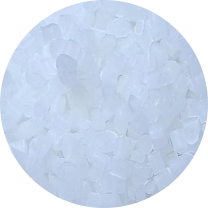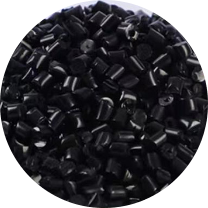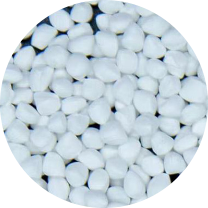Masterbatch manufacturers briefly analyze the six major functions of masterbatches in daily material processing?
Masterbatches have many important functions in daily material processing, which are crucial to improving product quality, production efficiency and the health of operators. The following is a brief analysis of the six major functions of masterbatches in daily material processing:
Make the pigment have better dispersibility in the product:
Masterbatch is an aggregate made by uniformly attaching an extraordinary amount of pigment to the resin. During the production process, the pigment will be refined to improve its dispersibility and coloring power. The carrier of the masterbatch is the same as the plastic variety of the product, and has good matching. After heating and melting, the pigment particles can be well dispersed in the plastic of the product, thereby ensuring the uniformity of the color of the product.
It is conducive to maintaining the chemical stability of the pigment:
When the pigment is used directly, the pigment is easily exposed to the air during storage and use, resulting in water absorption, oxidation and other phenomena, which in turn affects the quality of the pigment. After being made into a masterbatch, the resin carrier isolates the pigment from air and moisture, which can effectively prevent these phenomena from occurring, maintain the chemical stability of the pigment, and extend its service life.
Ensure the stability of product color: Masterbatch particles are similar to resin particles, which is more convenient and accurate in metering. They will not adhere to the container during mixing, and the mixing with the resin is also more uniform. This uniform mixing state can ensure the stability of the added amount, thereby ensuring the stability of the product color and avoiding the occurrence of color deviation or color difference.
Protect the health of operators: Pigments are generally powdery, which are easy to fly when added and mixed, and will affect the health of operators after being inhaled by the human body. After using masterbatches, since the pigments have been wrapped by the resin carrier, they are not easy to fly, so the health hazards to operators can be reduced.
Keep the environment clean and do not stain utensils: During the production and use of masterbatches, due to their good dispersibility and stability, they are not easy to cause dust pollution, which helps to keep the production environment clean. At the same time, since the pigments are wrapped by the resin carrier, they will not stain the production equipment and utensils, reducing the workload of cleaning.
Simple process, easy color change, saving time and raw materials: When using masterbatches for coloring, due to their uniform dispersibility and stability, the coloring process can be simplified and production efficiency can be improved. At the same time, because the coloring effect of masterbatch is stable and long-lasting, it can reduce the waste of raw materials and rework caused by color deviation or color difference, further saving time and cost.
Masterbatch plays many important roles in daily material processing, which together improve product quality, production efficiency and the health level of operators. Therefore, when selecting and using masterbatch, its performance characteristics and scope of application should be fully considered to ensure the quality and stability of the product.

prevNo previous article
nextPEPP Granular Plastic Polyethylene Functional Open Masterbatch: The innovative force of the plastics industry, leading the new trend of functionalization


 English
English 中文简体
中文简体 한국어
한국어 عربى
عربى













